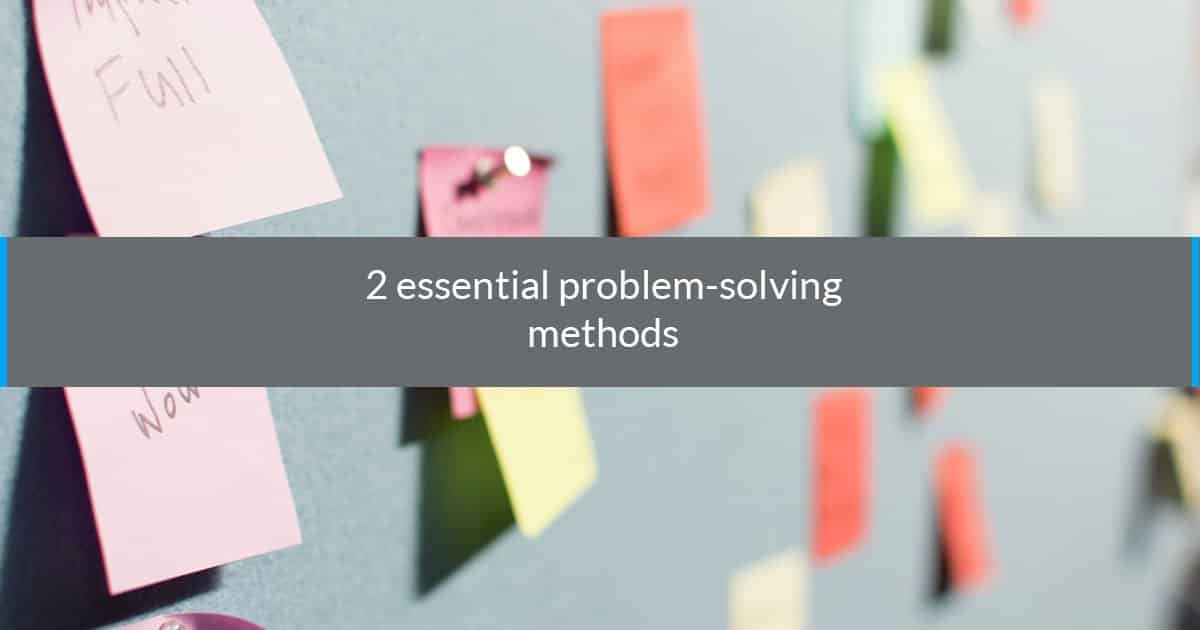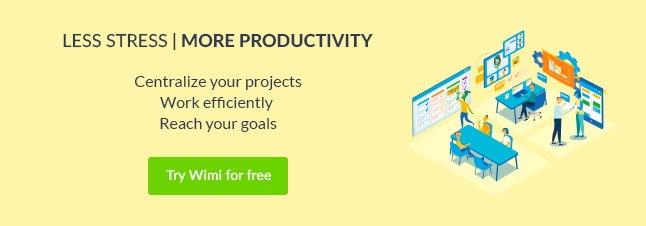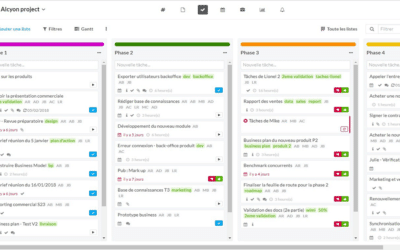Life is far from easy. At work, it is rare for projects to be completed without any complications. Whether it be a computer bug, a supplier which provides faulty products, a client that changes their requirements, it is for you and your team to confront these problems of varying importance daily and it is necessary for you as a collective to resolve them in order for the project to progress.
Admittedly problems are inevitable, but you must stay positive. Instead of seeing them as challenges faced but as challenges that drive you and that develop your thinking and creativity.
Some problems resolve themselves quickly, whilst others which are more complicated require to be considered as a mini-project in their own right. However, given that each issue is different,
to tackle them you must uphold the following three qualities: flexibility, adaptability and good communication.
In order to help you confront these delicate situations, there are many different methods and tools readily available to resolve them. Following here is a brief summary of our two preferred methods:
1. The classic 6-Step Method
To resolve the most part of problems, follow these 6 steps:
- Define the problem: This first step is obvious and essential. You must clearly identify the problem in order to be able to resolve it correctly. To do so, use the methods WWWWHW (What, Who, When, Where, How, Why).
- Identify its cause: On knowing the problem, now you must determine what are its causes. The key is to act against what caused the problem and not the problems’ symptoms. If you only react to the symptoms of the problem, you run the risk of the problem reoccurring. To do so, you can make use of the cause-and-effect diagram (also known as the Ishikawa diagram or the fishbone diagram).
- Find alternative solutions: At this time, it is necessary to be creative and consider all the possible solutions to the problem. Brainstorm with your team!
- Choose your selected solution: In order to choose the best solution to resolve a problem you can use tools such as a decision matrix or a decision tree.
- Put in place the selected solution: Have you selected which solution to adopt? It’s time to act. In order to guarantee the success of this stage, you must prepare an action plan so that everything happens under the best conditions possible.
- Implement and effectuate the solution: This stage is crucial to ensure that the solution is effective and allows you to fully resolve the problem. If this is not the case, you must return to stage 3 and reconsider the other planned solutions.
2. The 8D Method
A method developed by the car manufacturer Ford, this method is collaborative and is a multidisciplinary team effort. As its name indicates, it is carried out in the following 8 steps:
- Create the team: Carefully choose competent and experienced collaborators to resolve the problem above others capability.
- Describe the problem: Precisely identify and detail what is the problem you must confront.
- Put in place a temporary solution: Contrasting to other problem-resolving techniques, the 8D method encourages you to impose a “quick-fix”. It must be affordable, easy to install and uninstall in order to easily replace it with the final solution.
- Identify the causes: Now that the problem is temporarily fixed, you must focus on researching what caused the problem.
- Determine the right course of action: Once you have identified the causes, you must find a permanent solution and assure yourself that it will work by testing it.
- Put in place the permanent solution: If the solution is approved, execute it and oversee the results in order to guarantee the problem has been completely eradicated.
- Avoid the problem reoccurring: To avoid the problem reappearing, standardise the used, correct actions and implement preventative measures (i.e. supporting documentation, training etc.)
- Congratulate the team: Don’t forget to be grateful and congratulate your team for their work and success!
Different tools to resolve a problem
As we have already seen before, you can use different tools during the problem-solving process. Here are a few, but don’t forget there are many others that exist too!
What, Who, Where, When, How, Why
Thanks to this popular tool, you can analyse precisely the situation by asking yourself these simple yet important questions:
- What: Describe the problem
- Who: Who does this problem concern?
- Where: Where has the problem taken place?
- When: How long has this problem existed?
- How: How can you proceed? What are the resources that you are able to put in place?
- Why: What are the reasons and cause of the problem?
The Cause and Effect Diagram
Also commonly known as the Ishikawa diagram or the Fishbone Diagram, it is a visual tool which allows you to carry out structured research on what caused the problem.
Brainstorming
An ideal method to come up with new ideas, brainstorming is a creative and spontaneous technique carried our as a team allowing them to identify all of the potential solutions to the problem.
Decision Matrix
As its name indicates, this tool helps you make a decision when you must choose the best solution to resolve a problem. For this reason, you must define the desired solutions criteria and analyse whether each potential solution matches it. The winning solution is that which has the highest score.
The Tree Diagram
Use this tool when you are confronted with a complex situation which requires you to deeply analyse each different option possible in order to make the best decision.
Conclusion
Clearly there is a magnitude of problem-solving methods but usually they follow the same process, such as: defining the problem, identifying the cause, finding the potential solutions, putting in place the best one and monitoring its success. The most important thing required, is to be able to assure yourself that the solution put in place is the most effective long-term and the problem will not arise again
With Wimi, make sure that nothing goes under your nose and that all your projects progress smoothly.










